50+ Sample Health Proposal
-
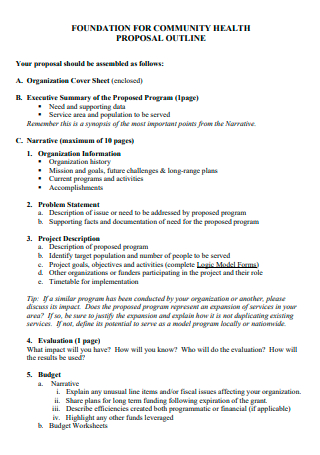
Foundation For Community Health Proposal Outline
download now -
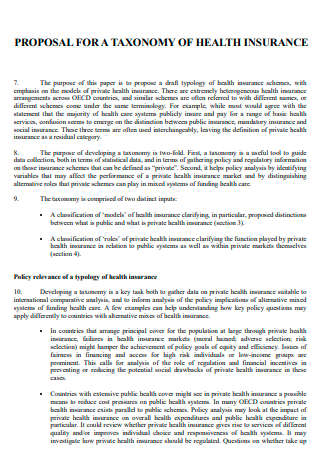
Health Insurance Proposal
download now -
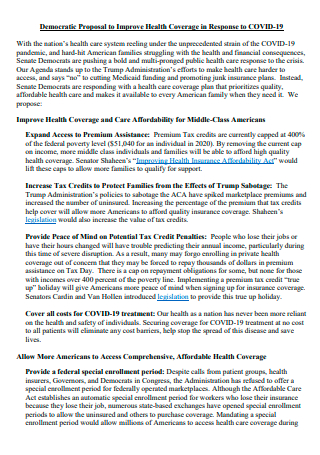
Health Coverage in Response to Covid-19 Proposal
download now -

Behavioural Health Mini Grant Proposal
download now -
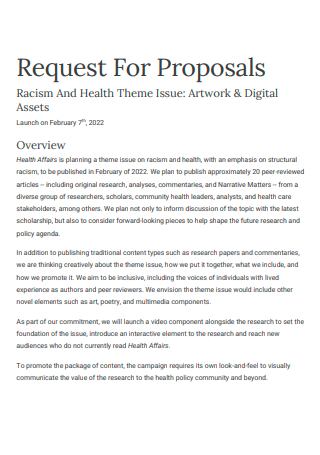
Racism And Health Theme Issue Proposal
download now -
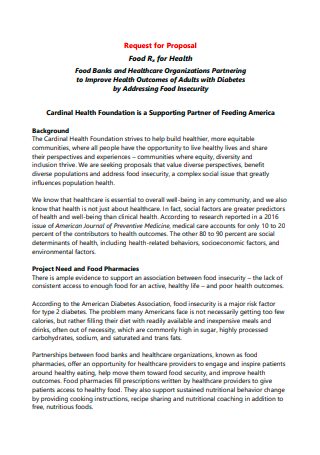
Food For Health Proposal
download now -
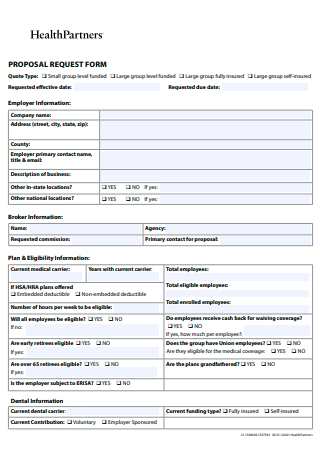
Health Partners Proposal Request Form
download now -

Board of Health Proposal
download now -
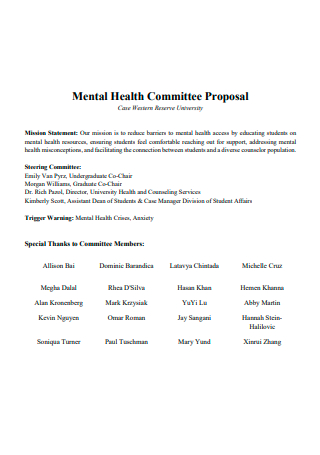
Mental Health Committee Proposal
download now -
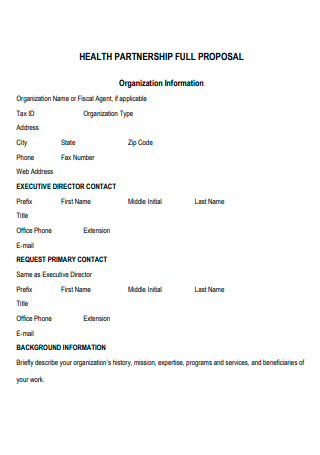
Health Partnership Proposal
download now -

Health System Proposal
download now -
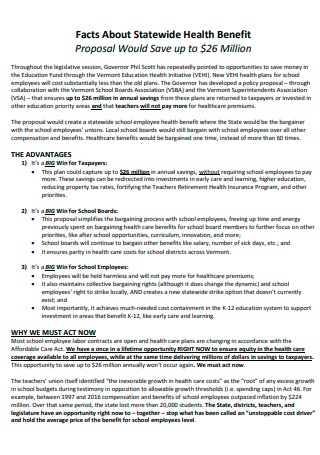
Health Benefit Proposal
download now -
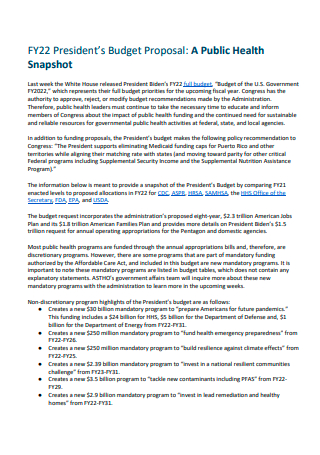
Public Health Budget Proposal
download now -
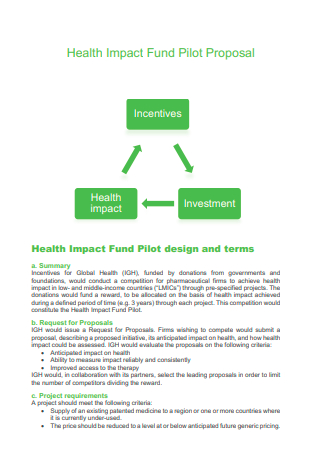
Health Impact Fund Pilot Proposal
download now -
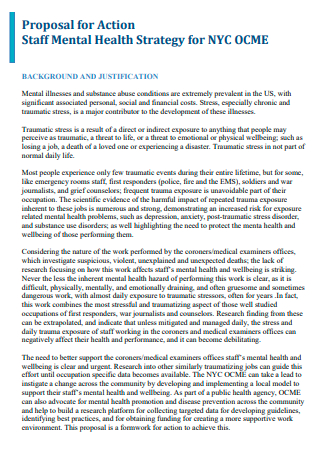
Staff Mental Health Strategy Proposal
download now -
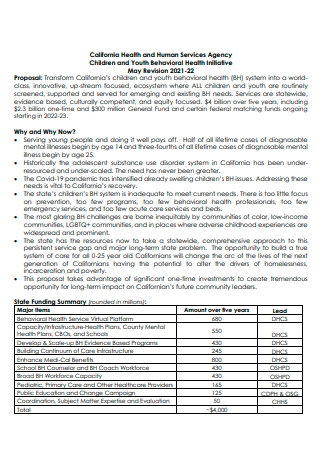
Health and Human Services Agency Proposal
download now -
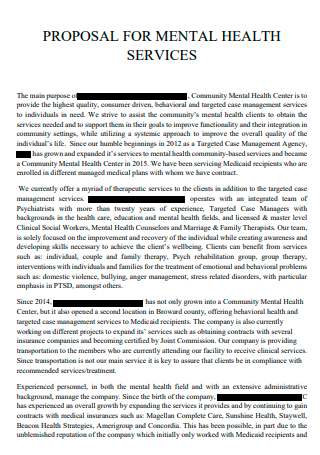
Mental Health Services Proposal
download now -
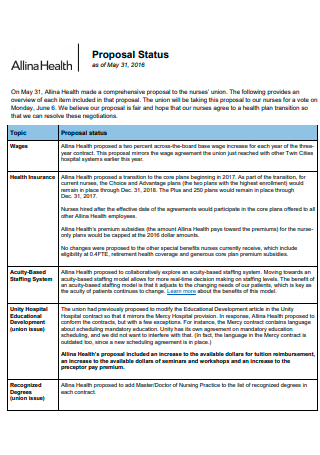
Health Proposal Status
download now -

Disabilities Health Plans Proposal
download now -

Health Care Proposal
download now -
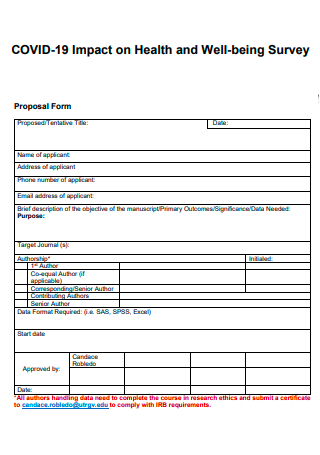
Health and Survey Proposal Form
download now -
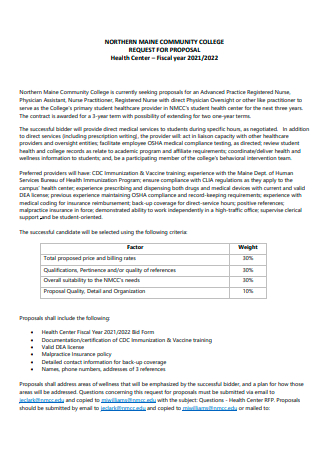
Health Center Proposal
download now -
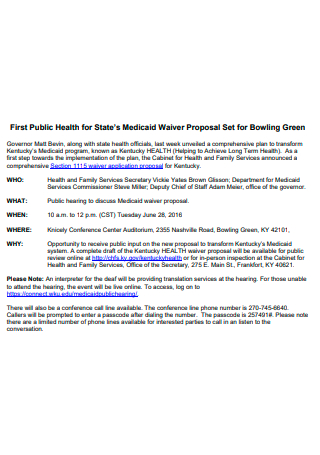
Public Health Waiver Proposal
download now -
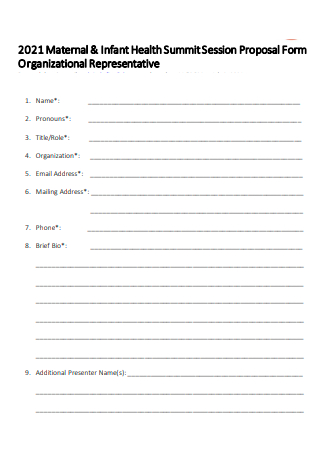
Maternal and Infant Health Summit Session Proposal Form
download now -
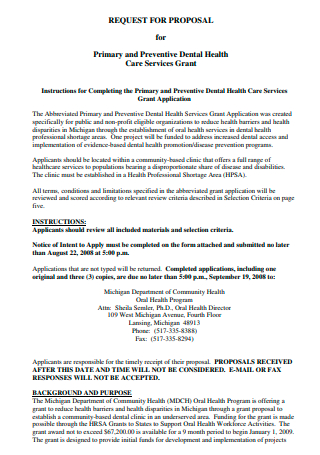
Primary and Preventive Dental Health Proposal
download now -

Mental Health Crisis Responses Proposal
download now -
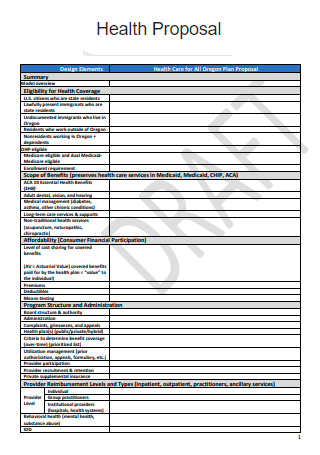
Draft Health Proposal
download now -
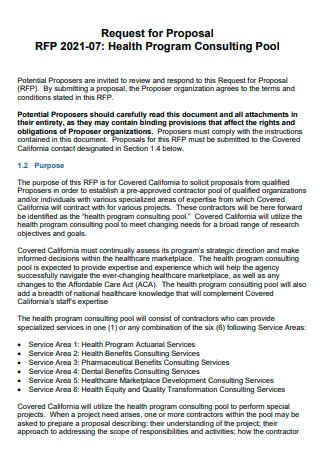
Health Program Consulting Proposal
download now -
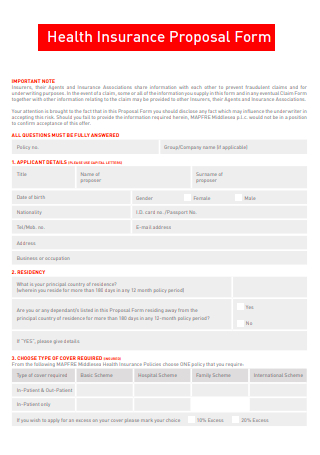
Health Insurance Proposal Form
download now -
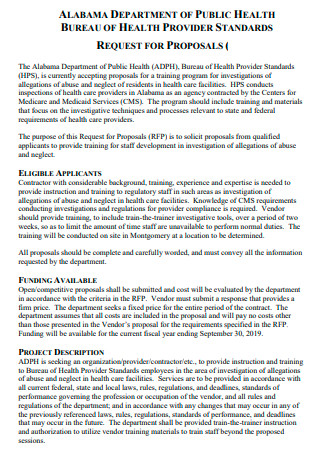
Standard Health Proposal
download now -
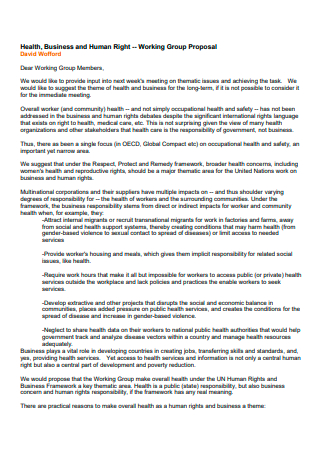
Health Working Group Proposal
download now -
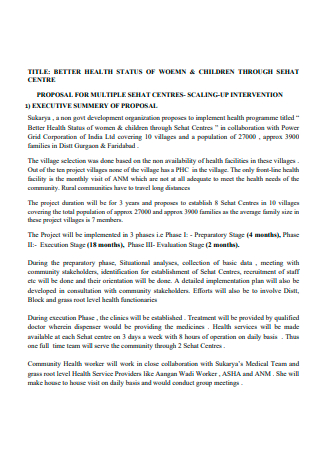
Health Status of Women nd Children Proposal
download now -
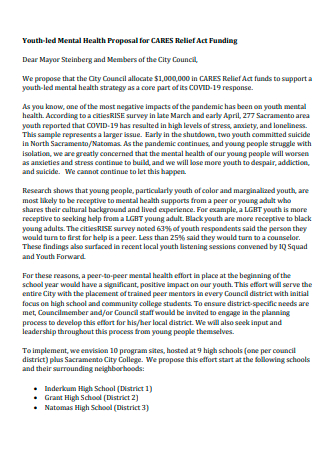
Youth Mental Health Proposal
download now -
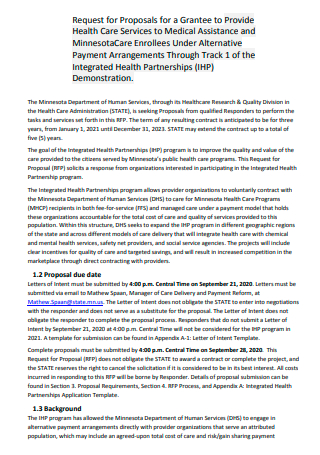
Health Care Services to Medical Assistance Proposal
download now -
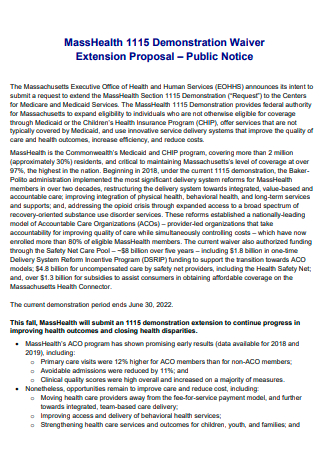
Health Demonstration Waiver Extension Proposal
download now -
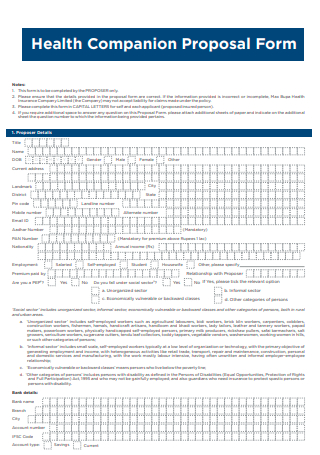
Health Companion Proposal Form
download now -
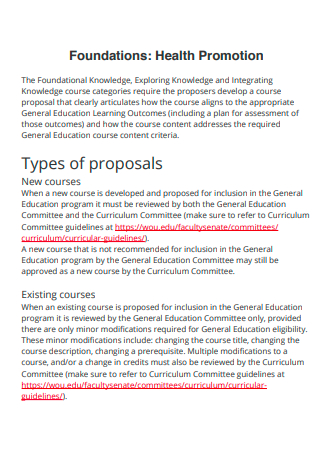
Health Promotion Proposal
download now -

Health Insurance Coverage Proposal
download now -
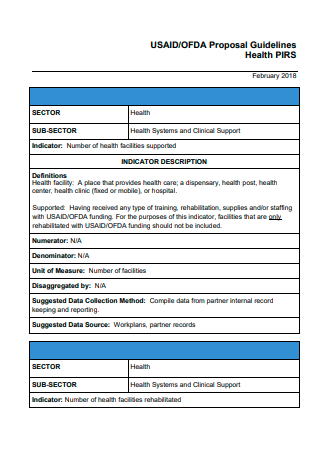
Formal Health Proposal
download now -
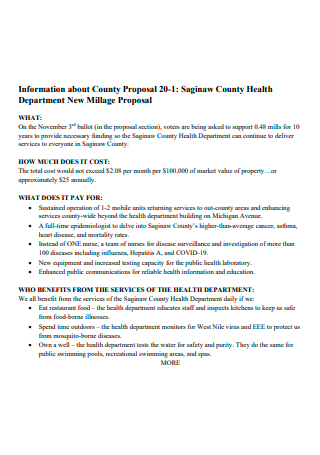
Health Department Proposal
download now -
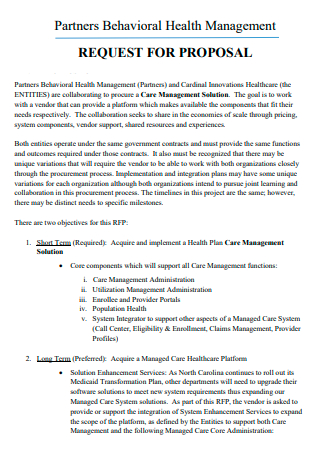
Partners Behavioral Health Management Proposal
download now -

Mobile Health Data Collection Proposal
download now -
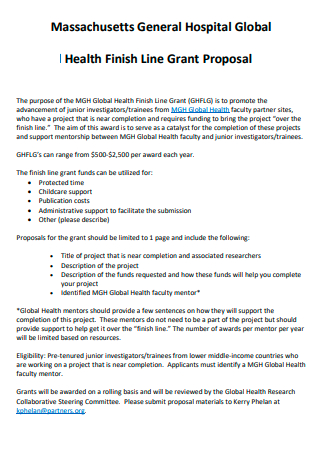
Hospital Global Health Finish Line Grant Proposal
download now -
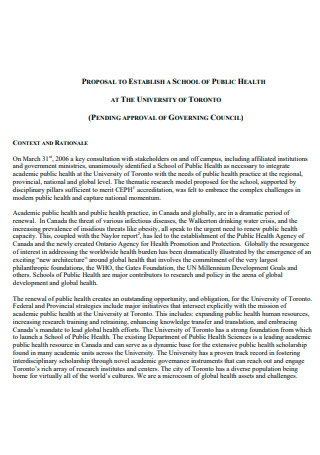
Public Health Proposal
download now -
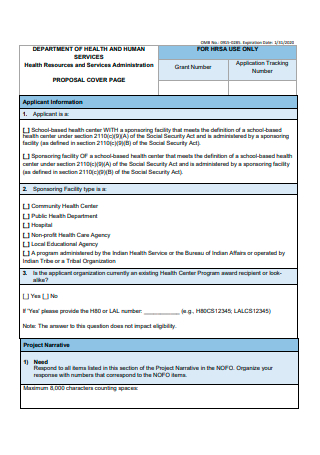
Department of Health and Human Services Proposal
download now -
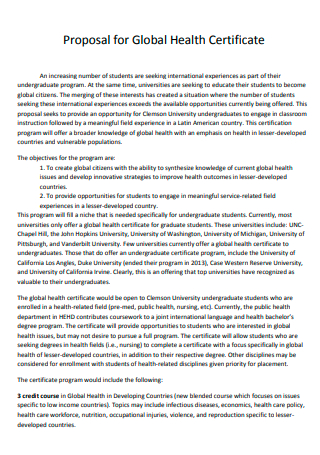
Global Health Certificate Proposal
download now -
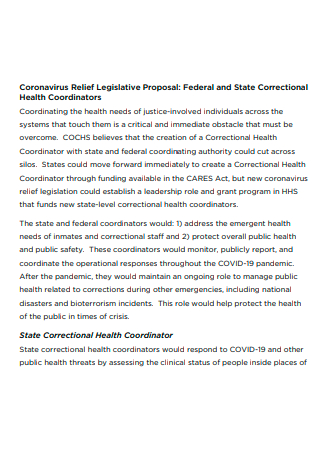
Health Coordinators Legislative Proposal
download now -

Brokerage Services Health Insurance Proposal
download now -

Occupational Health Services Proposal
download now -

Global Health Major Proposal
download now -
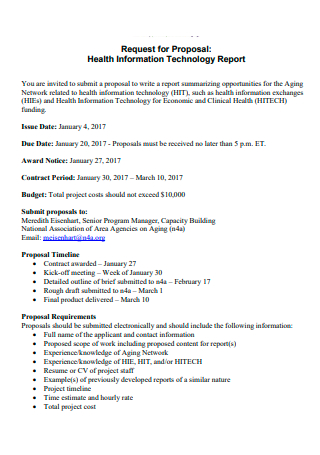
Health Information Technology Report Proposal
download now
What Is a Health Proposal?
A health proposal is a formal proposal that presents ideas and plans aimed at achieving any health-related objective. The proposal can either be general and all-encompassing or it can focus on a specific health issue.
According to an online article by The Atlantic, less than 3% of Americans qualify as those who lead “healthy lifestyles”. The article further cites a 2016 study that defines a healthy lifestyle as having regular exercise for at least 150 minutes a week, a diet score of within the top 40% on the Healthy Eating Index scale, a body fat percentage of under 30%, and being a non-smoker.
Aspects of Health
Health is a broad field that covers a lot of various subfields. Taking into account recent global events, it is arguably the most universal and important concern people face today. A lot of people seek to gain maximum health benefits; but this is rarely obtained without a holistic approach towards health. All areas of health are crucial. However, the examples below tackle a few of the most fundamental aspects of health.
Tips For Creating a Health Proposal
Depending on its goal or objective, a health proposal can go many directions. It can be a proposal aimed at advancing public health or a proposal used for medical research and development. Whatever its objective, there are various ways to ensure that it is a proposal worth pursuing. The following examples are simple tips to keep in mind when crafting a health proposal.
How to Create a Health Proposal
A good health proposal doesn’t only need to be comprehensive, it should be compelling as well. However, if it is convenience you are after, consider using a predesigned template. It will save you a lot of time. Simply browse the editable templates from the selection above and choose one that best suits your needs. Once you have everything you need, follow the basic steps below.
Step 1: Start With an Introduction
Coming up with a good introduction is key. The term health proposal can be quite broad which is why narrowing it down further is crucial. It is important to maintain focus if your goal is to create an impactful proposal. Format-wise, your health proposal should still maintain structure, regardless of the objective of the proposal. A key aspect of that structure is an introduction. Ease the reader into your main ideas by crafting a creative and compelling introduction. Generally, an introductory section can be brief or even a couple of pages long. It should not be too long, but just enough to hook or pique the reader’s interest. There are different ways to come up with an interesting introduction. You can cite a recent event, share a personal experience, or enumerate interesting data.
Step 2: Give a Background
Once you have captured the reader’s attention, offer an informative and insightful background on the main topic of your health proposal. Before you can begin proposing your ideas and plans, you first need to give the reader some context as to what your objective and goals are all about. In the case of a health proposal, this can be by way of stating a problem that needs to be addressed or expounding on the need and importance of the study. Whatever way you decide to frame your background study, always keep in mind the focus and relevance of the subject. This section is meant to help prepare the reader and offer a framework for them to better understand the proposal.
Step 3: Propose Action
The next step is to propose plans and strategies that will help achieve the objective or help solve the problem. Now that the reader is briefed on the problem or goals of the proposal, you need to enumerate the ways and means of reaching the said goals. As much as possible, offer concrete examples and realistic plans. Action is key. List down action items and their corresponding success indicators. Action without accountability can breed insufficient results. If, for example, your action plan entails fundraising or investing in the procurement of new technology, make sure these are described in detail and the person assigned to the task is also indicated.
Step 4: Outline the Benefits
The unique nature of a proposal is that it is both persuasive and informative. In many cases, a proposal needs approval or requires backing and support. And approval cannot be awarded if the recipient or reader is unable to see the gains and advantages of your proposal. Therefore, you need to argue your case in the best way possible. For instance, you are proposing a construction of a clinic in your locality and need funding for the project. You have to be able to present your proposal in a persuasive and rational way. Enumerate the benefits of the program clearly and concisely. Having supporting evidence and solid reasoning to back up your claims can help increase the likelihood of gaining approval.
FAQs
How do you write a health proposal?
To write a health proposal, you need to narrow down the objectives in order to have a more focused discussion and proposal. Include an introduction, a background of the proposal, action plans, and a thorough discussion of its various costs and benefits. There may be additional sections depending on your format or needs. Refer to the tutorial guide above for more detailed instructions on how to craft a health proposal.
What is a proposal in healthcare?
Hospitals, clinics, or any healthcare institution or facility would sometimes require projects or programs in order to improve their services to patients and to the public. A request for proposal is sometimes needed to attract partners to undertake the said projects.
How can I write a proposal?
The content of a proposal will greatly depend on the objectives and needs of the one writing it. If you are looking to create a health proposal, several sections need to be incorporated including a background of the proposal and a list of strategic plans. For more options on customizing your own proposal, browse the wide selection of sample templates available above.
Health is as important as life itself. In all its forms, health ought to be prioritized- whether it’s one’s own mental health or pressing public health issues. Browse the sample health proposal templates above to get started on one today!
